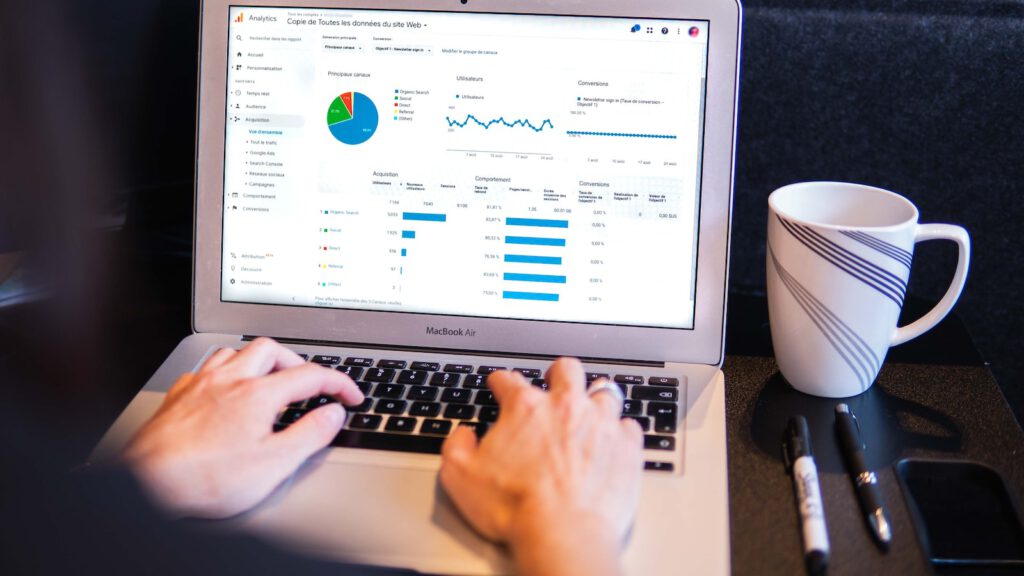
Streaming Analytics: How to Interpret Data and Insights
Data-driven decision-making is shaking up the way businesses operate and the modern economy runs – insight into the performance of your business can be interpreted and marketed in a heartbeat, thanks to streaming analytics. It’s no wonder why investing in these techniques is becoming increasingly popular across the globe. So, how can you understand and make the most of streaming analytics to make informed decisions for your business? Continue reading to find out.
1. Understanding the Basics of Streaming Analytics
Streaming analytics is an increasingly popular approach to gaining better insights from data as it is gathered and processed. It enables analyzing of data in real time and rapid response to changes in input streams. Businesses and organizations can more accurately monitor trends and take quick, data-driven decisions.
- Data source monitoring: Streaming analytics allows monitoring of the data sources in real-time and pick up any changes as soon as they occur.
- Predictive analytics: Through streaming analytics businesses can build and deploy predictive models in short periods of time. This assists in looking ahead to fluctuations in their operations.
- Real-time response: Using streaming analytics allows businesses to react quickly and appropriately to changes by analyzing the data as soon as it arrives.
Organizations must keep in mind that streaming analytics requires complex infrastructure and the right set of tools and skills to implement. Furthermore, best practices should be established with closely monitoring all parts of the streaming analytics process.

2. Analyzing Data for Insights and Opportunities
Data Analysis
Data analysis is the practice of examining and studying data to gain insights and identify opportunities. The process of data analysis involves using sophisticated software to filter, segment and sort data, then interpreting results to answer questions and drive decisions. It can be applied in virtually any context – from exploring the behavior of populations to analyzing customer feedback.
To extract meaningful insights from data, it’s essential to understand the context in which the data is generated. Questions such as where the data originates, who collects it, and when it is collected are all important. With a firm understanding of the context, data analysts can apply their technical skills to make sense of it and identify correlations between different sources.
Data analysis helps organizations to:
- Leverage trends
- Identify patterns
- Better understand customer behavior
- Gain valuable insights
- Gain competitive advantage
Data analysis can also be used to uncover potential new markets, improve customer experience, and spot areas for optimization. In today’s digital environment, it is crucial for businesses to analyze data in order to remain competitive. With the right data analysis tools and techniques, businesses can gain a greater understanding of their data and make better decisions.
3. Putting Streaming Analytics to Work in Your Organization
Streaming analytics can be a powerful tool for organizations to gain efficiencies, reduce costs, and take their operations to the next level. Here are three ways you can put streaming analytics to work in your organization:
- Automate Decision Making: Streaming analytics can help organizations quickly make decisions based on real-time data by automatically retrieving relevant information from a variety of data sources. This can help to reduce decision-making time and improve accuracy.
- Improve Visibility and Control: By combining streaming analytics with other powerful tools and applications, organizations can gain an understanding of their business process in near real-time and work to prevent potential issues before they occur.
- Unlock Insights: By harnessing the power of streaming analytics, organizations can gain insights that would otherwise remain out of reach. This can help make operations more efficient and allow organizations to make more informed decisions.
These are just a few of the ways streaming analytics can be put to work in an organization. Utilizing this technology can bring about meaningful, measurable results—in terms of cost savings, efficiency, and data-driven decision making.

4. Maximizing Benefits from Streaming Analytics
Streaming Analytics for Increased Benefit
Data is the lifeblood of an organization, and one way of tapping into its vital signs is by leveraging streaming analytics. With streaming analytics, businesses can collect and analyze data in real-time, enabling them to quickly respond to market changes, spot trends, and make informed decisions.
To get the most benefit out of streaming analytics, organizations should focus on optimizing data delivery and processing. This means structuring the data correctly for an effective in-flow of information, and ensuring that the output is accurate and timely. Additionally, businesses should ensure that they are not only focusing on current data, but also on historical trends and patterns. By actively exploring different data sources and utilizing the most advanced analytics tools, organizations can gain invaluable insights which can be used to create competitive advantages and increase profitability.
Ensuring that streaming analytics are integrated into operations is the key to unlocking its full potential. By taking the necessary steps to maximize the benefits of streaming analytics, businesses can capitalize on the competitive advantages that can be obtained from collecting and analyzing data in real-time. The power of streaming analytics is the ability to interpret data and insights quickly and accurately. Knowing how to analyze streaming data sets you up to be an expert in the field, allowing you to unlock the hidden potential of this powerful tool. By leveraging streaming analytics and the insights you gain from it, you will be able to make better decisions and be one step ahead of the competition. The future of data and insights is right at your fingertips!






